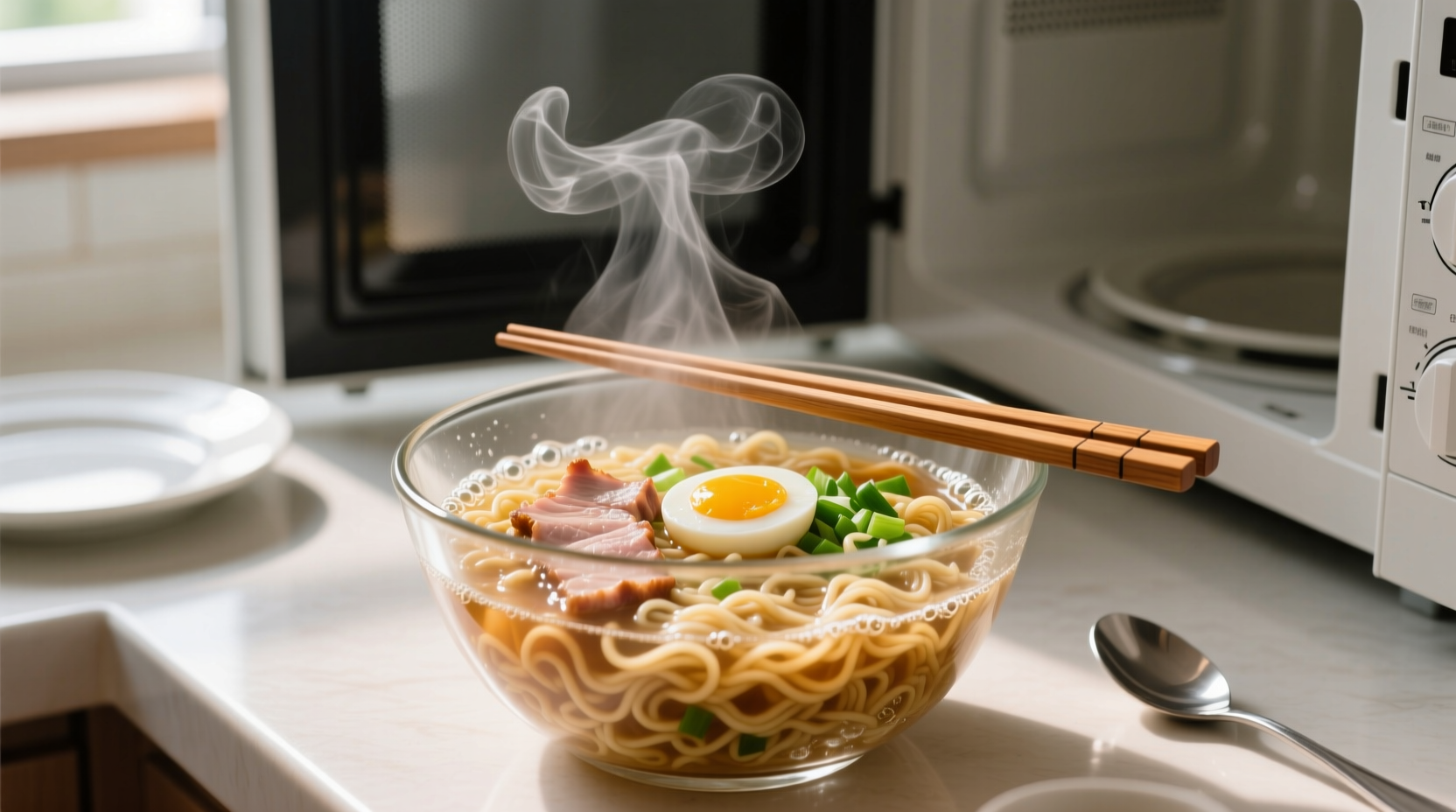For standard instant ramen noodles in a microwave, the optimal cooking time is 3-4 minutes at full power for most 600-1000W microwaves. Start with 3 minutes for al dente texture, adding 30-second increments if needed. Always use microwave-safe containers with adequate water (1-1.5 cups) and stir halfway through for even cooking.
Why Microwave Ramen Works (When Done Right)
When you're in a dorm room, office kitchen, or traveling without stove access, microwave ramen becomes your culinary lifeline. But unlike stovetop preparation where water temperature remains constant at 212°F (100°C), microwave heating creates uneven hot spots that affect noodle texture. This explains why many people end up with either mushy or undercooked noodles.
| Microvave Wattage | Water Amount | Base Cooking Time | Texture Result |
|---|---|---|---|
| 600-700W | 1.5 cups | 4 minutes | Firm but cooked |
| 800-900W | 1.25 cups | 3.5 minutes | Classic al dente |
| 1000W+ | 1 cup | 3 minutes | Slightly chewy |
Your Step-by-Step Microwave Ramen Journey
Preparation Phase: Setting Yourself Up for Success
Before hitting start on your microwave, proper setup prevents common disasters. Use a microwave-safe bowl at least twice the volume of your final ramen portion—this prevents dangerous boil-overs. Always add cold water to dry noodles first; starting with hot water increases explosion risk. For best results, break noodles into smaller pieces to ensure even water contact.
Cooking Phase: The Critical Timing Window
Place your bowl in the microwave and set the timer based on your appliance's wattage. At the halfway point (1.5-2 minutes), pause to stir the noodles. This simple step redistributes heat and prevents the bottom noodles from overcooking while top noodles remain hard. The starch released during cooking creates a viscous layer that insulates noodles from microwave energy—stirring breaks this barrier.

Finishing Phase: Beyond Basic Noodles
Immediately after cooking, let the ramen rest covered for 1 minute—this allows residual heat to finish cooking without over-softening. Only then should you add seasoning packets. Adding them before cooking causes salt to accelerate starch breakdown, resulting in mushy noodles. For restaurant-quality results, stir in a beaten egg during the last 30 seconds or top with quick-cooked additions like frozen vegetables.
Science-Backed Texture Control
Noodle texture depends on starch gelatinization temperature (140-158°F/60-70°C). Microwaves heat water unevenly, creating pockets where starch over-gelatinizes while other areas remain hard. The USDA's Food Safety and Inspection Service confirms that microwave cooking requires more frequent stirring than conventional methods to ensure food safety and quality. This explains why the halfway stir is non-negotiable for perfect ramen.
When Microwave Ramen Fails: Critical Boundaries
Microwave preparation works best for standard wheat-based instant ramen. It fails with:
- Fresh ramen noodles (require boiling water immersion)
- Ramen with included protein packets (meat/fish cooks unevenly)
- Cup-style containers not labeled microwave-safe (risk of chemical leaching)
Food scientist Dr. Harold McGee notes in On Food and Cooking that "microwave energy penetrates only about an inch into food," making thick noodle bundles problematic. For these cases, stovetop preparation remains superior.
Pro Chef Techniques for Instant Upgrade
Transform basic microwave ramen with professional tricks:
- Add 1 tsp vinegar before cooking to strengthen gluten structure
- Replace half the water with chicken or vegetable broth
- Cook noodles separately, then add to hot broth to prevent starch clouding
- Finish with a 30-second microwave burst after adding eggs
These methods address the fundamental limitation of microwave cooking: inability to maintain consistent boiling temperature. By controlling starch release and protein coagulation separately, you achieve textures impossible with standard microwave instructions.
Troubleshooting Your Microwave Ramen
Soggy noodles? You're using too much water or overcooking. Reduce water by 1/4 cup and decrease time by 30 seconds.
Hard centers? Stir more frequently (every minute) and cover with a microwave-safe plate to trap steam.
Boil-overs? Your bowl is too small or water level too high. Use larger container and never fill beyond 2/3 capacity.











 浙公网安备
33010002000092号
浙公网安备
33010002000092号 浙B2-20120091-4
浙B2-20120091-4